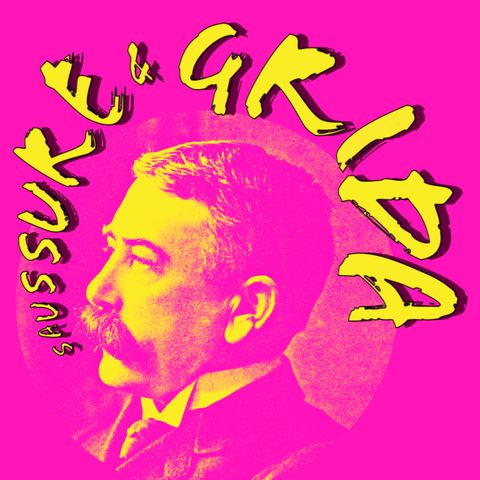17. Criptoletti: lingue segrete per non farsi capire

Download and listen anywhere
Download your favorite episodes and enjoy them, wherever you are! Sign up or log in now to access offline listening.
Description
Esploriamo il mondo dei criptoletti, ovvero lingue segrete create per nascondere informazioni e rafforzare legami sociali, conosciute anche come argot, antilingue, lingue furbesche, slang o gerghi. In questa puntata viaggiamo...
show moreGrafiche: Gianluca La Bruna
La sigla è stata prodotta da White Hot e fornita da https://freebeats.io
Inserto audio da: Vanzina, Carlo. Il Ras del quartiere. Italian International Film 1983.
FONTI:
- Ampatzidi, D. & Semelidou, E. (2008). Επικοινωνία και τρόπος έκφρασης των εφήβων. (Communication and way of expression of adolescents.). BA Thesis, T.E.I. of Crete, School of Health and Welfare Services (SEYP), Department of Social Work.
- Antoine, F. (1998). Des mots et des oms. Cahiers de Lexicologie, 72(l): 41-70.
- Baker, P. (2002). Polari: The Lost Language of Gay Men. London: Routledge.
- Berruto, G. (1987). Sociolinguistica dell’italiano contemporaneo, Roma, La Nuova Italia Scientifica (14a rist. Roma, Carocci, 2006).
- Caterino, A.F. (2018). La mimesi letteraria della lingua dei furfanti: il furbesco rinascimentale. In Eretici, dissidenti, inquisitori. Per un dizionario storico mediterraneo, 2. Roma: Aracne.
- Chomsky, N. (1955). The logical structures of linguistic theory. Cambridge: MA: M.I.T.
- Chomsky, N. (1957). Syntactic Structures. The Hague/Paris: Mouton.
- Ferrari, J. (2018). La lingua dei rapper figli dell'immigrazione in Italia. Lingue e culture dei media, Università di Milano, 2(1):155-172.
- Halliday, M. (1978). Language as Social Semiotic. London: Edward Arnold.
- Hiscock, R. (2007). A l'envers: le verlan dans La Haine. MA thesis, Memorial University of Newfoundland, Saint John's.
- Kubiček, A. (2021). Kriminalni argo (Šatrovački) i pozajmljenice iz romskog jezika (Criminal argo (Šatrovacki) and borrowings from the Roma language). Proceedings of the Institute for Criminological and Sociological Research, 40(2-3):77-89
- Méla, V. (1988). Parler verlan: Regles et Usages. Langage et Societé, 45:47-72.
- Méla, V. (1991). Le verlan ou le langage du miroir. Langages, 101: 73-94.
- Méla, V. (1997). Verlan 2000. Langue Française, 114:16-34.
- Munger, K. (2022). Generation Gap: Why the Baby Boomers Still Dominate American Politics and Culture. Columbia University Press.
- Plénat, M. (1991). Le Javanais: concurrence et haplologie. Langages. Les Javanais. 25(101):95-117. Paris: Larousse.
- Robert L'Argenton, F. (1991). Larlepem Largomuche du Louchébem: Parler l'argot du boucher. Langue Française. Parlures Argotiques, 90:113-125
- Sanga, G. (1989). Estetica del gergo. Come una cultura si fa forma linguistica. In G. Sanga (Ed.). La ricerca folklorica, 19:17-26.
- Sanga, G. (1993). Gerghi. In A. Sobrero (Ed.) Introduzione all’italiano contemporaneo II. La variazione e gli usi:151-189. Roma-Bari: Laterza.
- Tivanovac, P. (2016). Cockney rhyming slang and other argots. BA thesis, Josip Jursj Strossmayer University of Osijek, Faculty of Humanities and Social Sciences
Information
| Author | Irene |
| Organization | Irene Lami |
| Website | - |
| Tags |
Copyright 2024 - Spreaker Inc. an iHeartMedia Company

Comments